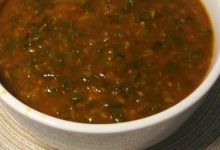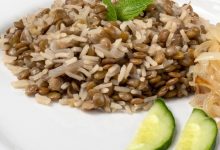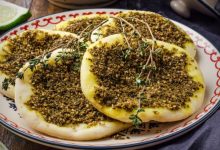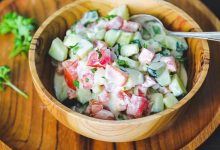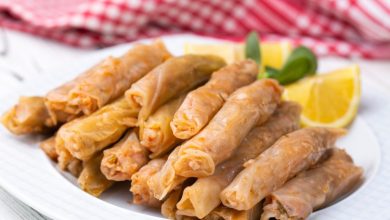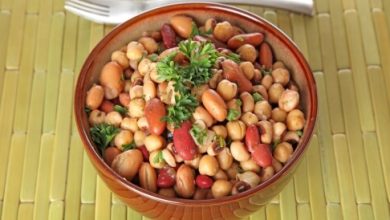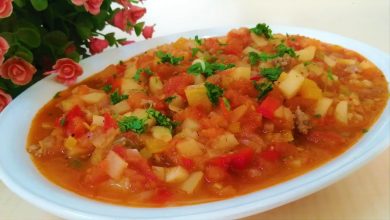Introduction
Frikeh, also known as freekeh or farik, is an ancient grain that has been a staple in Middle Eastern and Mediterranean cuisines for centuries. It is made from young green wheat that is harvested early, roasted, and then threshed to remove the chaff. This process gives the grain its unique smoky flavor and chewy texture. In recent years, frikeh has gained popularity around the world as a superfood due to its high fiber, protein, and nutrient content. Whether you’re looking to explore new grains, add more nutrition to your diet, or try traditional dishes, frikeh pilaf is an excellent place to start.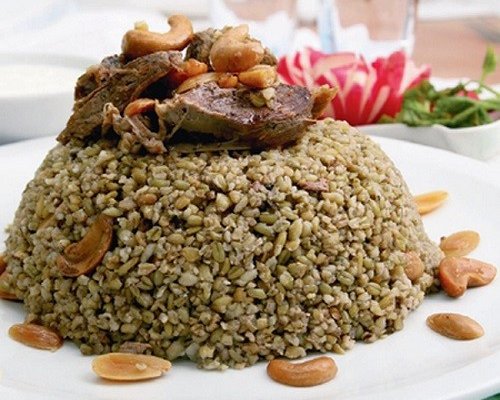
This guide will walk you through everything you need to know about making the perfect frikeh pilaf, from its nutritional benefits to step-by-step cooking instructions, tips, add-ons, and how to store it for later enjoyment.
Cooking Time
- Preparation Time: 10 minutes
- Cooking Time: 30-40 minutes
- Total Time: 40-50 minutes
- Servings: 4-6
Equipment Needed
- Medium saucepan
- Fine mesh sieve (for rinsing frikeh)
- Wooden spoon (for stirring)
- Cutting board and knife (for chopping vegetables)
- Measuring cups and spoons
- Large serving bowl
Tags
- #Healthy
- #WholeGrains
- #MiddleEasternCuisine
- #Vegetarian (optional)
- #HighFiber
- #Superfoods
- #FamilyMeal
- #OnePotDish
Ingredients
| Ingredient | Quantity |
|---|---|
| Frikeh (green wheat) | 1 cup |
| Olive oil | 2 tbsp |
| Onion (finely chopped) | 1 medium |
| Garlic (minced) | 2 cloves |
| Carrots (diced) | 1 small |
| Bell pepper (diced) | 1 small |
| Chicken broth (or vegetable broth) | 2 ½ cups |
| Ground cumin | 1 tsp |
| Ground coriander | 1 tsp |
| Ground cinnamon | ½ tsp |
| Salt | To taste |
| Ground black pepper | ½ tsp |
| Bay leaf | 1 |
| Fresh parsley (chopped) | 2 tbsp (for garnish) |
| Toasted pine nuts (optional) | ¼ cup (for garnish) |
Instructions
- Rinse the frikeh: Begin by rinsing the frikeh under cold water using a fine mesh sieve. This removes any dust or debris that might have accumulated during the packaging process.
- Sauté the aromatics: In a medium saucepan, heat the olive oil over medium heat. Add the chopped onion and cook until it becomes soft and translucent, about 5 minutes. Add the garlic, carrots, and bell pepper, and continue to cook for another 3-4 minutes until the vegetables soften.
- Add the spices: Stir in the ground cumin, coriander, and cinnamon. Cook for another minute to let the spices bloom and release their flavors.
- Add the frikeh and broth: Stir in the rinsed frikeh, making sure it is well coated with the oil and spices. Pour in the chicken broth, add the bay leaf, and season with salt and pepper to taste.
- Simmer: Bring the mixture to a boil, then reduce the heat to low and cover the saucepan. Let it simmer for about 30 minutes, or until the frikeh is tender and has absorbed most of the liquid. Stir occasionally to prevent sticking.
- Remove from heat: Once the frikeh is cooked, remove it from the heat and let it sit for 5 minutes. Fluff the frikeh with a fork to separate the grains.
- Garnish and serve: Stir in the fresh parsley and toasted pine nuts (if using) for added texture and flavor. Serve the frikeh pilaf hot as a side dish or as a main meal.
Nutritional Information
| Nutrient | Amount per Serving (1 cup) |
|---|---|
| Calories | 220 |
| Protein | 8g |
| Carbohydrates | 45g |
| Dietary Fiber | 9g |
| Total Fat | 5g |
| Saturated Fat | 0.8g |
| Sodium | 300mg |
| Sugars | 3g |
| Iron | 3mg |
| Calcium | 50mg |
Tips and Tricks
- Use broth for more flavor: While water can be used to cook frikeh, using chicken or vegetable broth enhances the flavor, making the pilaf richer and more savory.
- Toast the frikeh before cooking: For an extra layer of nutty flavor, dry toast the frikeh in the saucepan for a couple of minutes before adding the liquid.
- Don’t overcook: Keep an eye on the frikeh while it simmers. Overcooking can make it mushy, and you want the grains to remain slightly chewy.
- Vary the vegetables: You can add more vegetables like zucchini, peas, or spinach for a more colorful and nutritious pilaf.
- Make it vegan: To make this recipe vegan, simply replace the chicken broth with vegetable broth and skip any meat-based add-ins.
Add-ons
- Protein options: For a more filling meal, add grilled chicken, sautéed beef strips, or tofu to the pilaf.
- Nuts and seeds: Add toasted almonds, sunflower seeds, or sesame seeds for extra crunch and flavor.
- Dried fruits: Incorporate dried apricots, raisins, or cranberries for a sweet contrast to the savory elements.
Side Dishes
- Grilled vegetables: Serve the frikeh pilaf alongside grilled vegetables like zucchini, eggplant, and bell peppers for a complete meal.
- Yogurt sauce: A tangy yogurt sauce made with garlic, lemon, and cucumber pairs beautifully with the nutty frikeh.
- Hummus: A creamy hummus spread can be served as a dip alongside the pilaf to enhance the Middle Eastern flavors.
Improvements
- Add more spices: If you love bold flavors, try adding additional spices like paprika, turmeric, or even a pinch of saffron for a deeper color and flavor.
- Use ghee: For a more traditional touch, replace olive oil with ghee, which adds richness to the dish.
- Top with fresh herbs: Beyond parsley, you can experiment with cilantro, mint, or dill to change the flavor profile.
Save and Store
- Refrigerate: Allow the frikeh pilaf to cool completely before transferring it to an airtight container. Store it in the refrigerator for up to 4 days.
- Freeze: Frikeh pilaf freezes well. Place it in a freezer-safe container or bag, and it will keep for up to 3 months. To reheat, thaw in the refrigerator overnight and warm it up on the stove or in the microwave.
- Reheat properly: When reheating, add a splash of broth or water to prevent the pilaf from drying out.
FAQ
Q1: Can I make frikeh pilaf ahead of time?
Yes, frikeh pilaf can be made ahead of time and stored in the refrigerator for up to 4 days or frozen for up to 3 months. It reheats well with a little added liquid.
Q2: Is frikeh gluten-free?
No, frikeh is made from wheat and therefore contains gluten. It is not suitable for those with celiac disease or gluten sensitivities.
Q3: Can I substitute frikeh with another grain?
Yes, you can substitute frikeh with quinoa, bulgur, or brown rice, but the cooking times and liquid ratios may vary. Frikeh’s unique smoky flavor will be hard to replicate with other grains.
Q4: How do I know if frikeh is cooked?
Frikeh should be tender but still slightly chewy when cooked. If it’s still too hard, continue cooking with a little more liquid until the desired texture is reached.
Q5: What can I do if my frikeh is too mushy?
If you overcook your frikeh, spread it out on a baking sheet to cool. This can help absorb some of the excess moisture and improve the texture.
Conclusion
Frikeh pilaf is a delicious, nutritious, and versatile dish that fits well into a variety of meals. Whether you’re serving it as a side dish or making it the star of your dinner table, this ancient grain is sure to impress with its hearty texture and rich flavor. With simple ingredients and easy preparation, frikeh pilaf is a fantastic addition to any healthy, balanced diet.
References
- “The Nutritional Benefits of Ancient Grains,” Nutrition Journal, 2022.
- “Middle Eastern Cooking: Traditional Dishes with Modern Twists,” Culinary World, 2021.


